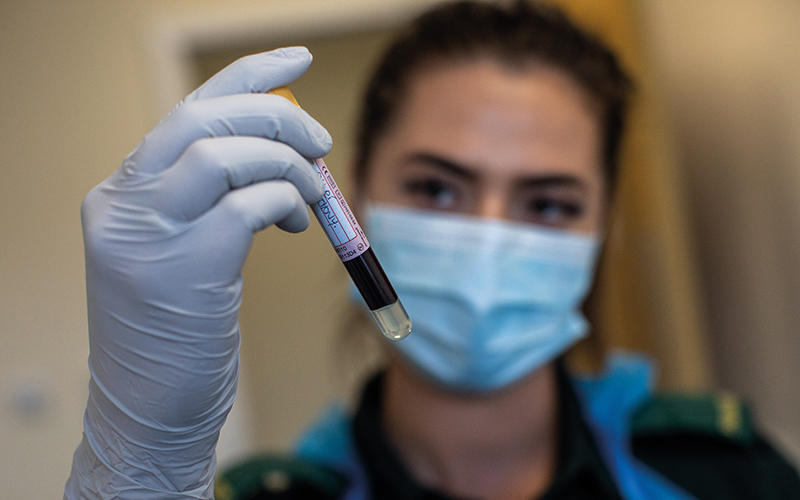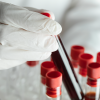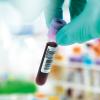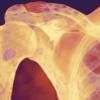Dr Eric Klein explains why a new blood test that can detect more than 50 types of cancer is set to have a huge clinical impact.

While it might appear that much of the world’s healthcare research capacity has been diverted towards investigating COVID-19 over the past 18 months, plenty of other work, studies and trials have been pushing ahead regardless and quietly delivering potentially groundbreaking results.
One such example is the recent validation study of a single blood test that can detect more than 50 types of cancer. Across 4077 participants – 2823 with a known cancer and 1254 without – its headline results showed that the multi-cancer early detection (MCED) test identified 99.5% of people without the disease (specificity) and 51.5% with the disease (sensitivity), which varied from 16.8% for stage I cancers to 90.1% for stage IV.
Published in the Annals of Oncology, the research, called “Clinical validation of a targeted methylation-based multi-cancer early detection test using an independent validation set”, was carried out by a research team drawn from institutions in the US, UK and Canada.
Next-generation sequencing
The lead author, Dr Eric Klein, Chairman of the Glickman Urological and Kidney Institute in Cleveland in the US, says it has taken the test four years to get to this point. “I became aware of the test when a former colleague developing a different biomarker for a different purpose brought it to my attention and asked if the Cleveland Clinic might be interested in participating in the clinical trials.”
The underlying technology for the test is the well-established next-generation sequencing. “It has been known for a long time that usually when cancer cells die, but sometimes from other processes, they shed all sorts of biologic substances into the bloodstream, DNA among them,” says Klein. “So, using next-generation sequencing, it’s possible to detect a really minute amount of DNA in the bloodstream. Following on from that, the idea was to marry the technology to the biology.”
The cancer-cell DNA that the test hunts is known as cell-free DNA, or circulating tumour DNA, because it’s released in the bloodstream and just flows free. Each kind of cancer-cell DNA also carries its own methylation fingerprint.
“Liver cancer has its own methylation fingerprint, as does bladder cancer, kidney cancer, lung cancer and so on,” says Klein. “And all of those patterns are different to normal cells from the same organs. So a normal liver cell has a different pattern than a cancerous liver cell. The value of the test, then, is that it can detect cancer-related DNA. And because of that specific fingerprint, it can say with some accuracy that a cancer is absent. It can also, with high accuracy, predict if a person has cell-free DNA from a cancer floating in their system and what organ system it came from.”
Screening paradigms
Perhaps the most impressive aspect of MDEC is that it can do this with more than 50 different kinds of cancers. “The important thing here is that there are only five established paradigms for screening for individual cancer. We have the PSA test for prostate cancer, CT scan for high-risk lung cancer, then colonoscopy, mammogram, and pap smear. All the other cancers that this test can detect don’t have any screening paradigms.”
A key to detecting these different cancers is the amount of cell-free DNA they create. “There are 12 common cancers that shed a lot of DNA relative to other tumours and so they give very strong signals. Lung and colon cancer are among them but those 12 cancers by and large have no screening paradigms, such as ovarian and pancreatic cancer. Those 12 cancers by themselves account for two-thirds of all cancer mortality in the US. What we now have is a test that can detect about two-thirds of those cancers and I think that’s pretty impressive.”
But just as some cancers shed a lot of DNA, some don’t, such as early stage prostate cancer. “It sheds almost no DNA or very little, below the level of detection into the bloodstream,” says Klein. “So it’s not going to be a useful test for early stage prostate cancer, Although it’s not published, it can detect prostate cancer at a more advanced stage, which means it might be useful as a biomarker to assess response.”

- Medical degree, University of Pittsburgh School of Medicine, Pennsylvania
- Residency in urology, Cleveland Clinic
- Fellowship in urology, Memorial Sloan Kettering Cancer Center, New York
- Chairman of the Glickman Urological & Kidney Institute.
Significant step
A marker of the test’s viability and potential value is that it has already been made available in the US via prescription. It’s also making its way to the UK, where it will be tested on more than 160,000 people in partnership with the NHS.
“The development stages included a lot of people that we knew had cancer, because we had to be sure it works. Now it needs to be tested in the more general population. We have completed such a study already in the US, called Pathfinder, and those results are being compiled and submitted for publication and should be available soon.”
But even at this stage it looks to be significant in the drive to detect and treat cancer earlier. “I’m excited,” admits Klein. “It opens the door to a new screening paradigm. We’re going to start screening individuals for multiple cancers in a single blood test.
“It’s similar, I think, to the story of genomic sequencing of metastatic cancers to find targetable mutations that respond to a specific drug. That goes back 10 years or so and at the beginning it didn’t have a big clinical impact. But now it is huge. Lots of drugs have been approved for targeting specific mutations.”
As with all new beginnings, there are teething issues. “We have to figure out how to identify and deal with false positive tests. They don’t occur often, only half a percent, but we need to avoid subjecting people to unnecessary stress. Also, the test found about half of the cancers, which means half went undetected. We have to understand why, and how we can build on this to find the other 50%.”
Image credit |Getty|Cleveland-Clinic




